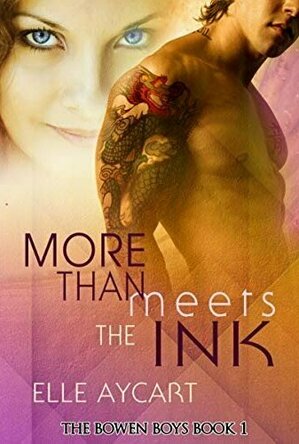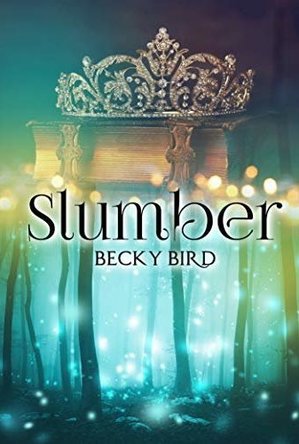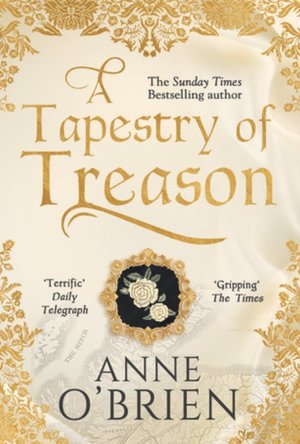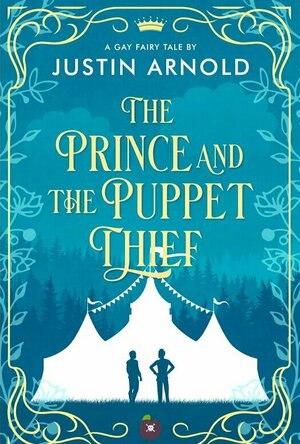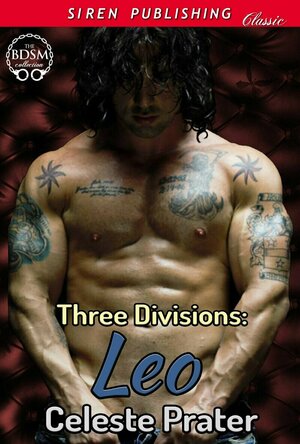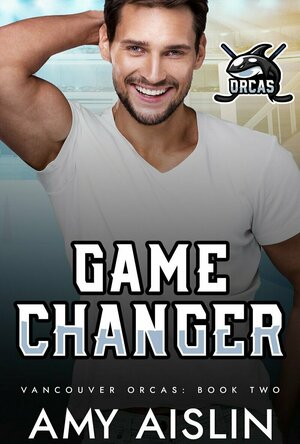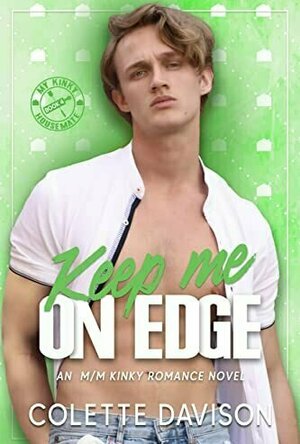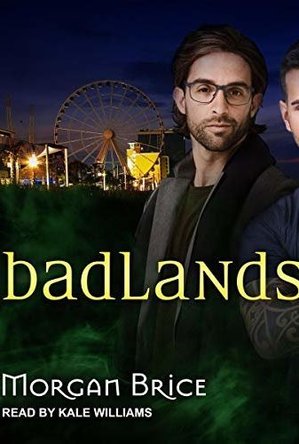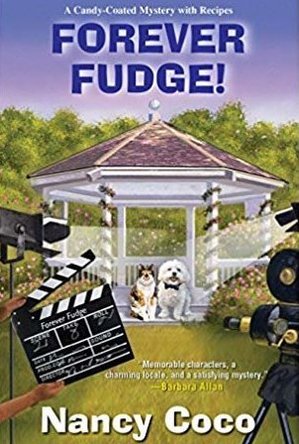Search
Search results
Leanne Crabtree (480 KP) rated More than Meets the Ink (The Bowen Boys #1) in Books
Jan 6, 2021
This review and more can be found at my blog https://aromancereadersreviews.blogspot.com
A Romance Reader's Reviews
2.5 stars
This has been borrowed from the Kindle Unlimited library and has been on my "want-to-read-don't-own" shelf on Goodreads for quite a while
This starts with Tate crawling across the garden with her mother as they try to spy on their neighbour, who Tate's mum believes has taken her cat, Amy. They are interrupted by tattooed pretty boy, James, who happens to be their neighbours son. Instant attraction leads to flirting. Flirting leads to lots of hot almost-sex, almost because they keep being interrupted by the residents of the older peoples housing facility where they're visiting their respective parents. They finally do the deed before they both have to head home, only they now know they live in the same city. And of course they end up meeting again.
Before I started this I thought it was more of a new adult type thing with it's older cover but the new one (above) has made it all a bit more mysterious. I wasn't sure what the story was going to be other than a romance so its detailed sex scenes threw me off a bit and after so many, I started skipping them entirely. The romance was already starting to bloom so I wasn't really missing anything.
There's also a secondary storyline involving Tate's family restaurant and someone trying to get her to close it with daily threatening emails and stuff going wrong in the restaurant. When James gets wind of what's been happening he insists on helping her deal with it.
I have to admit that I liked James, quite a lot to be honest. He was a little take-charge and bull headed at times but you could tell he did it because he cared. Tate was far too judgmental at the start and it took me quite a while to warm up to her. She seemed really argumentative at times and somewhat whiny.
I'll admit that towards the end I started skipping bits, starting to lose interest in it. I was mainly waiting for the show down with the bad guy.
Not as good as I wanted it to be.
A Romance Reader's Reviews
2.5 stars
This has been borrowed from the Kindle Unlimited library and has been on my "want-to-read-don't-own" shelf on Goodreads for quite a while
This starts with Tate crawling across the garden with her mother as they try to spy on their neighbour, who Tate's mum believes has taken her cat, Amy. They are interrupted by tattooed pretty boy, James, who happens to be their neighbours son. Instant attraction leads to flirting. Flirting leads to lots of hot almost-sex, almost because they keep being interrupted by the residents of the older peoples housing facility where they're visiting their respective parents. They finally do the deed before they both have to head home, only they now know they live in the same city. And of course they end up meeting again.
Before I started this I thought it was more of a new adult type thing with it's older cover but the new one (above) has made it all a bit more mysterious. I wasn't sure what the story was going to be other than a romance so its detailed sex scenes threw me off a bit and after so many, I started skipping them entirely. The romance was already starting to bloom so I wasn't really missing anything.
There's also a secondary storyline involving Tate's family restaurant and someone trying to get her to close it with daily threatening emails and stuff going wrong in the restaurant. When James gets wind of what's been happening he insists on helping her deal with it.
I have to admit that I liked James, quite a lot to be honest. He was a little take-charge and bull headed at times but you could tell he did it because he cared. Tate was far too judgmental at the start and it took me quite a while to warm up to her. She seemed really argumentative at times and somewhat whiny.
I'll admit that towards the end I started skipping bits, starting to lose interest in it. I was mainly waiting for the show down with the bad guy.
Not as good as I wanted it to be.
Lottie disney bookworm (1056 KP) rated Slumber in Books
Sep 9, 2019
Thank you to NetGalley and Becky Bird for providing an e-copy of Slumber in exchange for an honest opinion.
Everyone knows that the market for fairy tale retellings is hot right now and, as such, is becoming saturated. However, Becky Bird comes at the story of Sleeping Beauty from a completely different angle: what if “true love’s kiss” which breaks the spell isn’t that between the Prince and Princess?
Slumber was a slow burner for me personally. Initially I agreed with previous reviews that the novel would be considered middle-grade rather than YA but my opinion did change about half way through the book. In my opinion, this was when the author ‘settled in’ to the novel and truly developed the characters into ones the reader could relate to and find themselves rooting for.
This was also the point where it became clear Becky Bird was challenging a number of stereotypes through her characters: the Cardinal is a man of God but this does not necessarily make him good; Lucy is an orphan but this does not make her weak; Jack is a boy but this does not make him brave and, finally, Thomas is a Prince but this does not make him charming! This humanised the characters for me and I found myself growing to really like them.
There are also a number of tongue-in-cheek references to fairy tales which I really appreciated. Phrases such as “bibbidi-bobbidi-boo” and Jack running for the trees every chance he got added an undercurrent of humour throughout the novel.
Unfortunately, there were moments where I got frustrated by the novel skipping between locations and characters- sometimes mid-event. Separating these by chapters or even page breaks would have made this an easier read. The start of the book especially also seemed to be a tad “over written” with references to a literal river of tears and a croissant described as a “creamy delight”.
Overall Slumber was a quick and easy read with a really great concept and endearing characters. It possibly could have benefitted from some suspense as all the Cardinal’s motives were revealed right at the start of the book but nevertheless it was an enjoyable read.
Everyone knows that the market for fairy tale retellings is hot right now and, as such, is becoming saturated. However, Becky Bird comes at the story of Sleeping Beauty from a completely different angle: what if “true love’s kiss” which breaks the spell isn’t that between the Prince and Princess?
Slumber was a slow burner for me personally. Initially I agreed with previous reviews that the novel would be considered middle-grade rather than YA but my opinion did change about half way through the book. In my opinion, this was when the author ‘settled in’ to the novel and truly developed the characters into ones the reader could relate to and find themselves rooting for.
This was also the point where it became clear Becky Bird was challenging a number of stereotypes through her characters: the Cardinal is a man of God but this does not necessarily make him good; Lucy is an orphan but this does not make her weak; Jack is a boy but this does not make him brave and, finally, Thomas is a Prince but this does not make him charming! This humanised the characters for me and I found myself growing to really like them.
There are also a number of tongue-in-cheek references to fairy tales which I really appreciated. Phrases such as “bibbidi-bobbidi-boo” and Jack running for the trees every chance he got added an undercurrent of humour throughout the novel.
Unfortunately, there were moments where I got frustrated by the novel skipping between locations and characters- sometimes mid-event. Separating these by chapters or even page breaks would have made this an easier read. The start of the book especially also seemed to be a tad “over written” with references to a literal river of tears and a croissant described as a “creamy delight”.
Overall Slumber was a quick and easy read with a really great concept and endearing characters. It possibly could have benefitted from some suspense as all the Cardinal’s motives were revealed right at the start of the book but nevertheless it was an enjoyable read.
ClareR (6054 KP) rated Tapestry of Treason in Books
Aug 26, 2019
Intrigue in Henry Vs Court.
A Tapestry of Treason follows the life and intrigues of Constance of York, Lady Despenser from 1399 through to the early 1400s. And she was an absolutely fascinating woman. Hers was a totally dysfunctional family - but you do wonder how anyone could have a ‘normal’ family when mothers gave birth, handed their baby over to a wet nurse and went back to the Royal Court as soon as they were Churched. And the fathers didn’t seem to be there either. But this did make for some pretty interesting family dynamics. I’m surprised that there weren’t more illegitimate children, what with all the arranged, loveless marriages that seemed to be going on (although there were probably loads, and plenty of loving marriages too!).
Anyway, Constance was involved with her family in two plots against Henry V. York had been big supporters and cousins of Richard II, and were luckily also relatives of Henry V. So when Henry ousted Richard and imprisoned him, the Yorks were relatively safe. That was until they tried to reinstate Richard. Constance was fully a part of this plot: she’s portrayed as a strong-minded, confident woman who made her own mind up, and was loyal to her family. I do like female characters like this, and I like that Anne O’Brien didn’t make her into a caricature of a strident, bossy woman, as often happens in these cases.
I thought that the whole book was sensitively done. Henry isn’t made out to be a villain, in fact he’s always fair, and in some instances he may well have been thought of as too soft towards his York cousins (they were certainly dangerous to know).
I loved this book, actually. My mum has been pointing out Anne O’Brien books to me for ages, but I’ve avoided them because I knew I’d want to read everything once I started. Ah well, looks like I’ve started then (and always listen to your mum!).
Many thanks to The Pigeonhole for choosing yet another fabulous book, and to Anne O’Brien for reading along with the serialisation and answering questions. I had the best time!
Anyway, Constance was involved with her family in two plots against Henry V. York had been big supporters and cousins of Richard II, and were luckily also relatives of Henry V. So when Henry ousted Richard and imprisoned him, the Yorks were relatively safe. That was until they tried to reinstate Richard. Constance was fully a part of this plot: she’s portrayed as a strong-minded, confident woman who made her own mind up, and was loyal to her family. I do like female characters like this, and I like that Anne O’Brien didn’t make her into a caricature of a strident, bossy woman, as often happens in these cases.
I thought that the whole book was sensitively done. Henry isn’t made out to be a villain, in fact he’s always fair, and in some instances he may well have been thought of as too soft towards his York cousins (they were certainly dangerous to know).
I loved this book, actually. My mum has been pointing out Anne O’Brien books to me for ages, but I’ve avoided them because I knew I’d want to read everything once I started. Ah well, looks like I’ve started then (and always listen to your mum!).
Many thanks to The Pigeonhole for choosing yet another fabulous book, and to Anne O’Brien for reading along with the serialisation and answering questions. I had the best time!
Lottie disney bookworm (1056 KP) rated The Prince And The Puppet Thief in Books
Aug 30, 2021
I really loved The Prince and the Puppet Thief. This was a true fairy tale retelling that definitely didn't take itself too seriously.
Simon the Squirm is the son of the (second) most feared bandit in the kingdom and when we meet him he is stuffed into a cannon, ready to be fired to the tallest tower of the castle in order to steal some jewelled slippers. See what I mean about not taking itself seriously?
Simon also loves fairytales and the botched robbery sets into motion his own fairytale adventure, complete with dancing rats, sassy handmaids, the funniest bandits ever and some seriously cute queer relationships.
I loved everything about this book - did I mention I loved it? The writing style was very witty and I loved the little references and "skits" that poked fun at the fairytales we know and love. We even get an alternative version of The Snuggly Duckling pub from Tangled!
The villain of the story is captivating: they are both misunderstood and jaded by their past; trying to help but ruining lives when things don't go their way. The fact that the reader ends up sympathising with them really says a lot about both the writing and character development within this story.
But for me the relationships stole the show: I loved the contrast between one relationship which was very new and tension-filled, where the characters didn't know if their feelings were going to be accepted, never mind reciprocated and the second, forbidden but very settled relationship where the characters had been in love for some time.
There were some moments where the LGBTQ characters were not entirely accepted by others and I can't speak as to whether this would be triggering or not. Thankfully the main characters are very strong, they stand up for themselves and are so sure of their love that, by the end of the book, they are accepted for who they are.
If you're looking for a funny, cute but sassy, camp fairytale-turned-on-it's-head then this is the book for you!
I received an advance review copy for free, and I am leaving this review voluntarily.
Simon the Squirm is the son of the (second) most feared bandit in the kingdom and when we meet him he is stuffed into a cannon, ready to be fired to the tallest tower of the castle in order to steal some jewelled slippers. See what I mean about not taking itself seriously?
Simon also loves fairytales and the botched robbery sets into motion his own fairytale adventure, complete with dancing rats, sassy handmaids, the funniest bandits ever and some seriously cute queer relationships.
I loved everything about this book - did I mention I loved it? The writing style was very witty and I loved the little references and "skits" that poked fun at the fairytales we know and love. We even get an alternative version of The Snuggly Duckling pub from Tangled!
The villain of the story is captivating: they are both misunderstood and jaded by their past; trying to help but ruining lives when things don't go their way. The fact that the reader ends up sympathising with them really says a lot about both the writing and character development within this story.
But for me the relationships stole the show: I loved the contrast between one relationship which was very new and tension-filled, where the characters didn't know if their feelings were going to be accepted, never mind reciprocated and the second, forbidden but very settled relationship where the characters had been in love for some time.
There were some moments where the LGBTQ characters were not entirely accepted by others and I can't speak as to whether this would be triggering or not. Thankfully the main characters are very strong, they stand up for themselves and are so sure of their love that, by the end of the book, they are accepted for who they are.
If you're looking for a funny, cute but sassy, camp fairytale-turned-on-it's-head then this is the book for you!
I received an advance review copy for free, and I am leaving this review voluntarily.
Merissa (13614 KP) rated Leo (Three Divisions #1) in Books
Apr 25, 2023
Having been a mahoosive fan of Celeste Prater's Fueled by Lust series, I had a few trepidations about reading this one. For starters, the BDSM scene isn't really my thing, and the few books I have read involving it didn't do anything for me at all. BUT!!! being as how I loved her Sci-Fi, I thought I would give it a go... and I'm glad I did!
Whether or not it rings true doesn't matter to me. What matters is that I found it completely believable within the constraints of the story. The definition of 'Three Divisions' made so much sense, and it made a nice change to have it spelt out in a way that was understandable without being condescending. It actually gave me the warm fuzzies to think that there is someone out there who would be able to take control but also put someone else's needs above their own. I absolutely loved how Leo took care of Jillian, in all ways! The humour was witty and well-timed. I really enjoyed watching Jillian grow, both in the playroom and out. Her put down of Brent was fantastic and I was giving her a high-five at the time!
The suspense side of it was exceedingly well-written, with surprises coming left, right and centre. You knew something was up with the amount of 'air time' that Jillian's client got, but the actual outcome, I didn't see coming. Jillian's handling of said event, and the aftermath, were superb - cool, calm and collected.
Hopefully, without giving anything away, I loved the wrap-up to this book. Everything was as it should be, and I am very much looking forward to the next book in this series. For not liking BDSM books, to giving this one a 5-star and feeling the fuzzies, I can highly recommend it to anyone considering reading about BDSM, or who just wants a steamy, sexy, suspenseful, romantic read. LOVED IT!
* A copy of this book was provided to me with no requirements for a review. I voluntarily read this book, and the comments here are my honest opinion. *
Merissa
Archaeolibrarian - I Dig Good Books!
Nov 22, 2015
Whether or not it rings true doesn't matter to me. What matters is that I found it completely believable within the constraints of the story. The definition of 'Three Divisions' made so much sense, and it made a nice change to have it spelt out in a way that was understandable without being condescending. It actually gave me the warm fuzzies to think that there is someone out there who would be able to take control but also put someone else's needs above their own. I absolutely loved how Leo took care of Jillian, in all ways! The humour was witty and well-timed. I really enjoyed watching Jillian grow, both in the playroom and out. Her put down of Brent was fantastic and I was giving her a high-five at the time!
The suspense side of it was exceedingly well-written, with surprises coming left, right and centre. You knew something was up with the amount of 'air time' that Jillian's client got, but the actual outcome, I didn't see coming. Jillian's handling of said event, and the aftermath, were superb - cool, calm and collected.
Hopefully, without giving anything away, I loved the wrap-up to this book. Everything was as it should be, and I am very much looking forward to the next book in this series. For not liking BDSM books, to giving this one a 5-star and feeling the fuzzies, I can highly recommend it to anyone considering reading about BDSM, or who just wants a steamy, sexy, suspenseful, romantic read. LOVED IT!
* A copy of this book was provided to me with no requirements for a review. I voluntarily read this book, and the comments here are my honest opinion. *
Merissa
Archaeolibrarian - I Dig Good Books!
Nov 22, 2015
Debbiereadsbook (1620 KP) rated Game Changer (Vancouver Orcas #2) in Books
Jul 19, 2023
delightful rad that hits a spot I didn't know needed hitting!
Independent reviewer for Archaeolibrarian, I was gifted my copy of this book.
This Is book 2 in the Vancouver Orcas series, I have not read book one, Game Plan. I didn't think I was missing anything, but I WANT to read that book now, i don't need to, you know? So this can be read as a stand alone book, but be prepared to feel the same as I did after reading this one.
Blair has a self inflicted deadline, and he needs help to sort himself out so he can meet it. Charlie needs the extra cash, so steps up as general assistant and food prep person. Falling in love was not on the agenda for either of them.
I've read a couple by Amy Aislin, and they seem to carry a common theme, for me: warm and fuzzies and a whole lotta cute, and this book is no exception to that!
It really is a wonderful read, one that made me chuckle in places, it's emotional in places, it's steamy at some points, and hella smexy in others (and yes, steamy and smexy ARE different, but don't ask my book brain to explain it!) and it really is an all round great read.
There is no break up, no nutty ex, no real drama save for Charlie's cash flow problem, but that got fixed anyway. There are some family issues, but they get sorted once people see what they are doing.
I loved that once Charlie and Blair decide to be together, they go all in and Blair's team mates take Charlie in as one of their own.
It took me a wee while to place all of Charlie's cousins, and even longer to get that Matt Shore, Blair's coach, is one of those cousins! There is a clue to Matt's story here: his is the first book. And cousin Dorian, who plays a large part here, has the third book in the trilogy. I need that book too!
A delightful read, that really hit the spot I didn't know needed hitting.
4 very VERY good stars
*same worded review will appear elsewhere
This Is book 2 in the Vancouver Orcas series, I have not read book one, Game Plan. I didn't think I was missing anything, but I WANT to read that book now, i don't need to, you know? So this can be read as a stand alone book, but be prepared to feel the same as I did after reading this one.
Blair has a self inflicted deadline, and he needs help to sort himself out so he can meet it. Charlie needs the extra cash, so steps up as general assistant and food prep person. Falling in love was not on the agenda for either of them.
I've read a couple by Amy Aislin, and they seem to carry a common theme, for me: warm and fuzzies and a whole lotta cute, and this book is no exception to that!
It really is a wonderful read, one that made me chuckle in places, it's emotional in places, it's steamy at some points, and hella smexy in others (and yes, steamy and smexy ARE different, but don't ask my book brain to explain it!) and it really is an all round great read.
There is no break up, no nutty ex, no real drama save for Charlie's cash flow problem, but that got fixed anyway. There are some family issues, but they get sorted once people see what they are doing.
I loved that once Charlie and Blair decide to be together, they go all in and Blair's team mates take Charlie in as one of their own.
It took me a wee while to place all of Charlie's cousins, and even longer to get that Matt Shore, Blair's coach, is one of those cousins! There is a clue to Matt's story here: his is the first book. And cousin Dorian, who plays a large part here, has the third book in the trilogy. I need that book too!
A delightful read, that really hit the spot I didn't know needed hitting.
4 very VERY good stars
*same worded review will appear elsewhere
Merissa (13614 KP) rated Keep Me On Edge (My Kinky Housemate, #4) in Books
Sep 3, 2022
Sad, hopeful, caring, sweet, HOT! I loved every word.
KEEP ME ON EDGE is the fourth book in the My Kinky Housemate series and it's time for the pro-Dom to take centre stage. Stefan has liked Quinn ever since he entered the house. Quinn has liked Stefan ever since he entered the house. And it's through my boy Hendrix's meddling that Quinn finally has the courage to ask Stefan out.
Ah, man. These two! They are absolutely gorgeous together. Not in the 'I now have cavities' way of Theo and Preston (who I still adore, btw!) but in a caring and totally loving way of looking out for someone. And it goes both ways. It's not all Stefan catering to Quinn. The storyline with Stefan is absolutely heart-breaking. We already know some of it due to having Beau's story already, but hearing Stefan's side of it was just as bad.
Moving onto the steamy side of things, it's hot! I don't expect anything less from Colette Davison, but I seriously love the thought she puts into her scenes. This book taught me things I never knew I didn't know about narcolepsy and cataplexy and not once did I feel as though I was reading an instruction manual. Stefan takes notice of Quinn at all times, giving him the time he needs. This includes when they're in the bedroom. This will sound crazy until you read the book, but the bit with the fan made my eyes leak! So sweet, so considerate. LOVED IT!!!
I am loving this series. It seems as though it may be Rory's story next but who knows? What I do know is I will wait patiently for each book and thoroughly enjoy it when I get my grabby hands on it. We learn a little more about Hendrix in this book but, once again, I'll wait.
Absolutely fantastic and highly recommended by me.
** same worded review will appear elsewhere **
* A copy of this book was provided to me with no requirements for a review. I voluntarily read this book, and the comments here are my honest opinion. *
Merissa
Archaeolibrarian - I Dig Good Books!
Ah, man. These two! They are absolutely gorgeous together. Not in the 'I now have cavities' way of Theo and Preston (who I still adore, btw!) but in a caring and totally loving way of looking out for someone. And it goes both ways. It's not all Stefan catering to Quinn. The storyline with Stefan is absolutely heart-breaking. We already know some of it due to having Beau's story already, but hearing Stefan's side of it was just as bad.
Moving onto the steamy side of things, it's hot! I don't expect anything less from Colette Davison, but I seriously love the thought she puts into her scenes. This book taught me things I never knew I didn't know about narcolepsy and cataplexy and not once did I feel as though I was reading an instruction manual. Stefan takes notice of Quinn at all times, giving him the time he needs. This includes when they're in the bedroom. This will sound crazy until you read the book, but the bit with the fan made my eyes leak! So sweet, so considerate. LOVED IT!!!
I am loving this series. It seems as though it may be Rory's story next but who knows? What I do know is I will wait patiently for each book and thoroughly enjoy it when I get my grabby hands on it. We learn a little more about Hendrix in this book but, once again, I'll wait.
Absolutely fantastic and highly recommended by me.
** same worded review will appear elsewhere **
* A copy of this book was provided to me with no requirements for a review. I voluntarily read this book, and the comments here are my honest opinion. *
Merissa
Archaeolibrarian - I Dig Good Books!
Merissa (13614 KP) rated A Timeline Restored (Prevent the Past #3) in Books
Jun 15, 2023
A TIMELINE RESTORED is the outstanding finale in the Prevent the Past trilogy and we finish with a bang!
It is Alora and Eli's turn - two people who have suffered more than most and are firmly on board with Lainey's plan. Now, I'm going to be honest here. I haven't suffered what Alora has (thank goodness) so I have no idea how I'd react, either during or after the event. I understand that, I do, but I did find myself telling her to move on; that Eli had done the best he could in a horrible situation, and that he wasn't the one to actually do the deed. She didn't listen to me and poor Eli paid the price. Him-I loved, which actually surprised me considering the things he has done. But, oh man, he knew he had done them and paid for them every moment of every day. Tortured hero, anyone? Sign me up!
Anyway, there is more to this book than just Eli and Alora. We also have Elle and Zach, plus Lainey and Hunter, plus Claire and Cyrus, and let's not forget the indomitable Marie. Can someone please pass me a hanky?
The ending - oh, my; let's talk about that ending, shall we? The words perfect, shocking, twisted, and is it really over? pass through my mind! I won't say anymore but oh, boy. Strap yourselves in because it's a bumpy ride but definitely worth it!
This has been such a great series, outside my normal comfort zone with all the talk of time travel, paradoxes, and science, but I have loved each and every book. Rebecca Hefner was already a go-to author for me for paranormal romance. Now I know that it doesn't matter the genre; if she writes it, I will read it!
HIGHLY recommended but please start with book one so you have some idea of what's going on!
** same worded review will appear elsewhere **
* A copy of this book was provided to me with no requirements for a review. I voluntarily read this book; the comments here are my honest opinion. *
Merissa
Archaeolibrarian - I Dig Good Books!
Jun 15, 2023
It is Alora and Eli's turn - two people who have suffered more than most and are firmly on board with Lainey's plan. Now, I'm going to be honest here. I haven't suffered what Alora has (thank goodness) so I have no idea how I'd react, either during or after the event. I understand that, I do, but I did find myself telling her to move on; that Eli had done the best he could in a horrible situation, and that he wasn't the one to actually do the deed. She didn't listen to me and poor Eli paid the price. Him-I loved, which actually surprised me considering the things he has done. But, oh man, he knew he had done them and paid for them every moment of every day. Tortured hero, anyone? Sign me up!
Anyway, there is more to this book than just Eli and Alora. We also have Elle and Zach, plus Lainey and Hunter, plus Claire and Cyrus, and let's not forget the indomitable Marie. Can someone please pass me a hanky?
The ending - oh, my; let's talk about that ending, shall we? The words perfect, shocking, twisted, and is it really over? pass through my mind! I won't say anymore but oh, boy. Strap yourselves in because it's a bumpy ride but definitely worth it!
This has been such a great series, outside my normal comfort zone with all the talk of time travel, paradoxes, and science, but I have loved each and every book. Rebecca Hefner was already a go-to author for me for paranormal romance. Now I know that it doesn't matter the genre; if she writes it, I will read it!
HIGHLY recommended but please start with book one so you have some idea of what's going on!
** same worded review will appear elsewhere **
* A copy of this book was provided to me with no requirements for a review. I voluntarily read this book; the comments here are my honest opinion. *
Merissa
Archaeolibrarian - I Dig Good Books!
Jun 15, 2023
Debbiereadsbook (1620 KP) rated Badlands (Badlands #1) in Books
Apr 29, 2019
rather good!
Independent reviewer for Archaeolibrarian, I was gifted the audio copy of this book.
Simon has run to Myrtle Beach after he lost his job and his love. Vic is there after he saw something he could not explain. There have been some murders in town, and Vic, a homicide cop, comes across Simon's ghost tours and seance shop and figures it can't do any harm, right? To ask? But as Simon and Vic get closer to each other, so the killer gets closer to Simon. And Simon doesn't think anyone can stop him, except Simon, or that he will walk away alive.
I liked this! A lot!
Simon is disgraced by a disgruntled parent who says he was teaching the occult, and leaves his Folklore professor job and runs to Myrtle Beach. He finds relative happiness in town, with his shop and ghost tours. Meeting Vic makes him realise he is lonely though. Helping Vic with his murders seems a natural thing to do, but that puts Simon in the cross hairs of the murderer. And also makes Simon a suspect so Vic has to take a step back from Simon and become objective in his job. It breaks his heart that he might lose Simon before he can have him, though. Simon solves the case, and has to hope that he can stop the murderer and maybe, just maybe, he can survive.
Both Simon and Vic have a say, and I loved that was they are drawn to each other, right from the start, so powerfully! The attraction both men feel is off the charts, and it doesn't take them long to give into that attraction. Simon's abilities are a bit of a sticking point, but they do come through for Vic and his case. Vic doesn't want to believe, look how much trouble it caused him when he voiced what he saw in Pittsburgh, for crying out loud! But he knows, deep down, Simon is for real, and maybe, Simon is FOREVER for Vic. They just need get through this.
It's a bit gruesome in places, because the crime scenes are described in some, but not great, detail. Just enough to make you cringe, and wish you could un-see the picture that comes up in your head.
Sexy in places, scary in others. First of Brice I've read, and would like to read more.
Kale Williams narrates. I *thought* I had listened to something else by Williams before, but I can't find what, but no matter. I really did like his narration here. There are a lot of characters with foreign accents, and Williams delivers them very well. His reading voice is clear and even, and all the voices are distinctive enough for me to follow who was speaking, without out being told. As a person with some hearing loss, this is VITAL for me to enjoy a book!
I loved the way Williams gets the emotions of Simon and Vic across. Even when things were going down, and things were getting scary, Simon's love for Vic shone as the brightest emotion. Fabulous narrating!
4 solid stars for the book
4 solid stars for the narration
**same worded review ill appear elsewhere**
Simon has run to Myrtle Beach after he lost his job and his love. Vic is there after he saw something he could not explain. There have been some murders in town, and Vic, a homicide cop, comes across Simon's ghost tours and seance shop and figures it can't do any harm, right? To ask? But as Simon and Vic get closer to each other, so the killer gets closer to Simon. And Simon doesn't think anyone can stop him, except Simon, or that he will walk away alive.
I liked this! A lot!
Simon is disgraced by a disgruntled parent who says he was teaching the occult, and leaves his Folklore professor job and runs to Myrtle Beach. He finds relative happiness in town, with his shop and ghost tours. Meeting Vic makes him realise he is lonely though. Helping Vic with his murders seems a natural thing to do, but that puts Simon in the cross hairs of the murderer. And also makes Simon a suspect so Vic has to take a step back from Simon and become objective in his job. It breaks his heart that he might lose Simon before he can have him, though. Simon solves the case, and has to hope that he can stop the murderer and maybe, just maybe, he can survive.
Both Simon and Vic have a say, and I loved that was they are drawn to each other, right from the start, so powerfully! The attraction both men feel is off the charts, and it doesn't take them long to give into that attraction. Simon's abilities are a bit of a sticking point, but they do come through for Vic and his case. Vic doesn't want to believe, look how much trouble it caused him when he voiced what he saw in Pittsburgh, for crying out loud! But he knows, deep down, Simon is for real, and maybe, Simon is FOREVER for Vic. They just need get through this.
It's a bit gruesome in places, because the crime scenes are described in some, but not great, detail. Just enough to make you cringe, and wish you could un-see the picture that comes up in your head.
Sexy in places, scary in others. First of Brice I've read, and would like to read more.
Kale Williams narrates. I *thought* I had listened to something else by Williams before, but I can't find what, but no matter. I really did like his narration here. There are a lot of characters with foreign accents, and Williams delivers them very well. His reading voice is clear and even, and all the voices are distinctive enough for me to follow who was speaking, without out being told. As a person with some hearing loss, this is VITAL for me to enjoy a book!
I loved the way Williams gets the emotions of Simon and Vic across. Even when things were going down, and things were getting scary, Simon's love for Vic shone as the brightest emotion. Fabulous narrating!
4 solid stars for the book
4 solid stars for the narration
**same worded review ill appear elsewhere**
Sassy Brit (97 KP) rated Forever Fudge in Books
Jun 5, 2019
Forever Fudge by Nancy Coco is a sweet cozy mystery. Readers will salivate with the fudge recipes, be charmed on the Mackinac Island, and attempt to crack the murder mystery along with the main character Allie McMurphy.
Coco is a great pseudonym for the Fudge series. “I really enjoy writing these cozy mysteries with the humor and solving the puzzle. While writing my first series, I would put recipes on my blog. Then a friend of mine suggested I should write in this genre with a gluten free bakery. My last name was specifically chosen for this series. I love fudge, actually anything chocolate. The person in the apartment next to us said it always smells like chocolate in my house. Not only does it smell good but tastes good as well.”
Allie is an amateur sleuth. She and her dog Mal have an uncanny ability to find dead bodies. In the past, she has helped the police solve cases. As the owner of a delightful hotel and fudge shop on Mackinac Island, Allie’s excitement has grown after a television crew arrives on the island to film a television pilot for a mystery series. Throwing a wrench into the enthusiasm is the dead body found by Allie’s adorable Bichon-Poo puppy, Mal. Shot in the head, the body discovered has a letter with clues from chess moves. As the killings mount up, the murderer continues to taunt Allie, trying to get her to play his game.
The island plays a role in the story. “I have a huge family living in Michigan, which is where the island is located. If you ever saw the movie, “Somewhere in Time” starring Christopher Reeve, you can picture the setting. The island does not allow cars so people travel by foot, horse and carriage, or bicycle. It is a cool touristy place.”
There is also a love triangle. Allie is being wooed by two courters. She broke up with Trent Jessup because a long-distance relationship is not working, with him spending a lot of time in Chicago. The other beau is police chief Rex Manning who is being persistent in pursuing her, yet, willing to give her time and space.
“I thought it is interesting to compare ‘in love versus loving someone.’ I love my male friends but being ‘in love’ has excitement, a commitment, and intimacy. Allie is starting to build connections but some old timers see her as an outsider. One of those who accept her as part of the community is Rex who sees it as his responsibility to protect her and the community.”
Actual recipes are dispersed throughout the story. “I purposely did it this way to show what Allie is working on. I sprinkle it throughout to give the feel and flavor to what she is actually making. I try to relate it to the story when possible. I remember my first contract with Kensington Books required me to write ten recipes per book. Luckily, they downsized that amount. Since they had to be originals it was a relief.”
This story has an intriguing mystery, some romance, and humor. It is a fun who done it plot that has no shortage of suspects. Readers will be looking forward to the next installment, Fudge Bits, out next fall, a Halloween plot. It will highlight her cat instead of her dog that finds a Zombie body.
Coco is a great pseudonym for the Fudge series. “I really enjoy writing these cozy mysteries with the humor and solving the puzzle. While writing my first series, I would put recipes on my blog. Then a friend of mine suggested I should write in this genre with a gluten free bakery. My last name was specifically chosen for this series. I love fudge, actually anything chocolate. The person in the apartment next to us said it always smells like chocolate in my house. Not only does it smell good but tastes good as well.”
Allie is an amateur sleuth. She and her dog Mal have an uncanny ability to find dead bodies. In the past, she has helped the police solve cases. As the owner of a delightful hotel and fudge shop on Mackinac Island, Allie’s excitement has grown after a television crew arrives on the island to film a television pilot for a mystery series. Throwing a wrench into the enthusiasm is the dead body found by Allie’s adorable Bichon-Poo puppy, Mal. Shot in the head, the body discovered has a letter with clues from chess moves. As the killings mount up, the murderer continues to taunt Allie, trying to get her to play his game.
The island plays a role in the story. “I have a huge family living in Michigan, which is where the island is located. If you ever saw the movie, “Somewhere in Time” starring Christopher Reeve, you can picture the setting. The island does not allow cars so people travel by foot, horse and carriage, or bicycle. It is a cool touristy place.”
There is also a love triangle. Allie is being wooed by two courters. She broke up with Trent Jessup because a long-distance relationship is not working, with him spending a lot of time in Chicago. The other beau is police chief Rex Manning who is being persistent in pursuing her, yet, willing to give her time and space.
“I thought it is interesting to compare ‘in love versus loving someone.’ I love my male friends but being ‘in love’ has excitement, a commitment, and intimacy. Allie is starting to build connections but some old timers see her as an outsider. One of those who accept her as part of the community is Rex who sees it as his responsibility to protect her and the community.”
Actual recipes are dispersed throughout the story. “I purposely did it this way to show what Allie is working on. I sprinkle it throughout to give the feel and flavor to what she is actually making. I try to relate it to the story when possible. I remember my first contract with Kensington Books required me to write ten recipes per book. Luckily, they downsized that amount. Since they had to be originals it was a relief.”
This story has an intriguing mystery, some romance, and humor. It is a fun who done it plot that has no shortage of suspects. Readers will be looking forward to the next installment, Fudge Bits, out next fall, a Halloween plot. It will highlight her cat instead of her dog that finds a Zombie body.
